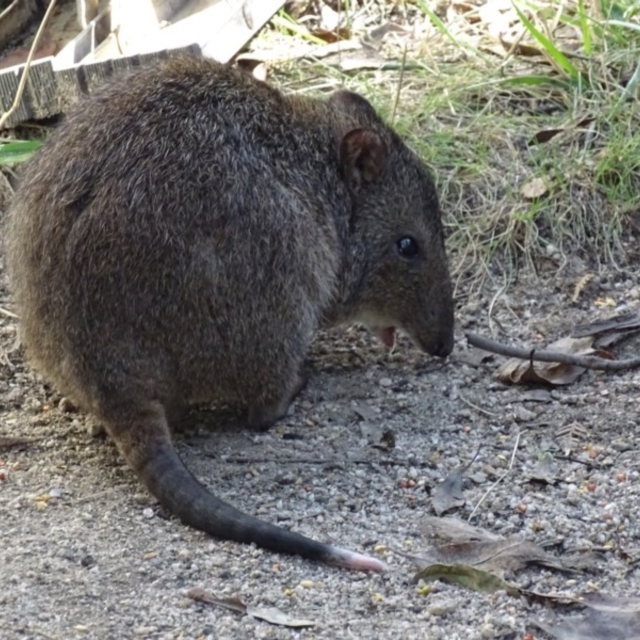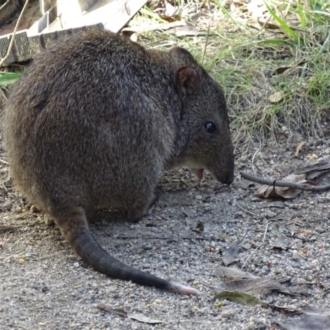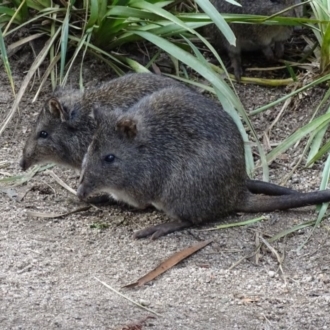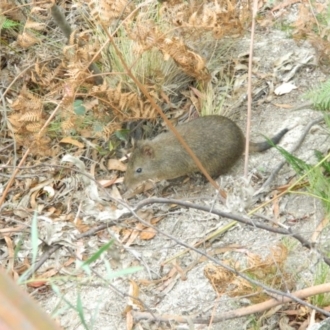Potorous tridactylus (Long-nosed Potoroo)
Potorous tridactylus has three subspecies: Potorous tridactylus tridactylus (Northern Long-nosed Potoroo); Potorous tridactylus trisulcatus (Southern Long-nosed Potoroo) and Potorous tridactylus apicalis. Potorous tridactylus apicalis occurs on the islands of the Bass Strait and Tasmania (Frankham et al. 2020), while the two mainland subspecies, Potorous tridactylus tridactylus and Potorous tridactylus trisulcatus occur on the south-eastern mainland of Australia.
Potorous tridactylus tridactylus and Potorous tridactylus trisulcatus are listed in the Vulnerable category of the threatened species list under the Environment Protection and Biodiversity Conservation Act 1999 (Cwth) (EPBC Act).
The long-nosed potoroo is a compact, medium-sized marsupial. The species name ‘tridactylus’ translates to three-toed, although the long-nosed potoroo technically has five toes (the second and third digits are conjoined). The hind limbs are long and well developed, enabling the animals to hop at great speeds. Their forearms are shorter and muscular with short, strong claws, well adapted to digging. The species has small, rounded ears, large eyes, and, as its name suggests, a long muzzle with a bare tip. The body has two fur layers, a soft, short dark grey fur on the back with coarser hair protruding from it and which can range in colour from yellow-white to brown with a black tip. The underside of the animal is covered in coarse white fur, with a grey base layer. Females have a well-developed pouch that opens anteriorly and contains four mammae. (https://www.environment.gov.au/biodiversity/threatened/species/pubs/86367-conservation-advice-02032022.pdf)
Potorous tridactylus is listed in the following regions:
Species information
- Potorous tridactylus Scientific name
- Long-nosed Potoroo Common name
- Not Sensitive
- Very rare / threatened
- Non-Invasive
- Up to 819.4m Recorded at altitude
- Machine learning
Follow Potorous tridactylus
Receive alerts of new sightings
Subscribe










































